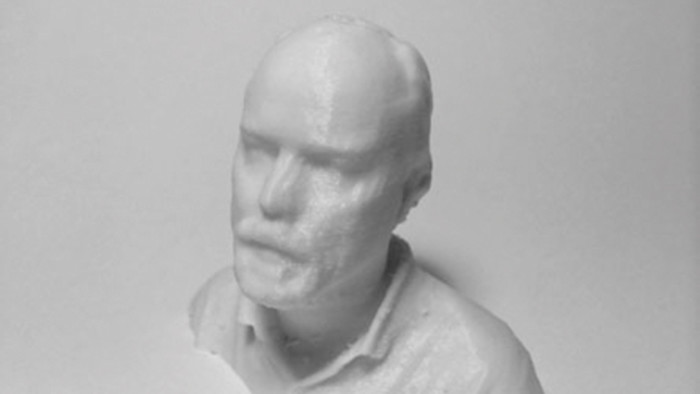Douglas Coupland: The 2½th Dimension

Roula Khalaf, Editor of the FT, selects her favourite stories in this weekly newsletter.
There’s that rare moment we all know when we walk down a street and catch a glimpse of someone reflected in a window and we say to ourselves, “Why, what an attractive and likeable human being that is! Dang, I wish I looked like that!” … only to realise we were looking at our own reflection. At which point we say to ourselves, “Maybe I shouldn’t be so hard on my self-image as I tend to be.” But, of course, whatever our relationship is with the mirror, it continues unchanged.
Enter the selfie. I know, it’s been written about endlessly – but there’s a twist coming.
Selfies are mirrors we can freeze. A bunch of selfies is a contact sheet containing nothing but flattering choices. Selfies allow us to see how others look at themselves in a mirror making their modelling face when nobody’s around … except these days, everybody’s around everywhere all the time. And don’t we all know the blushy face and pretend-humble tone of voice used by selfie takers when we call out someone on posting a selfie? “This picture there? Oh, ha ha, you know, it’s just a casual shot I had in my camera. I shouldn’t have put such a casual shot up on Facebook. I do look good in it, though, don’t I?”
Selfies are the second cousin of the air guitar.
Selfies are the proud parents of the dick pic.
Selfies are, in some complex way, responsible for the word “frenemy”.
I sometimes wonder what selfies would look like in North Korea.
Selfies are theoretically about control – or, if you’re theoretically minded, they’re about the illusion of self-control. With a selfie some people believe you’re buying into a collective unspoken notion that everybody needs to look fresh and flirty and young for ever. You’re turning yourself into a product. You’re abdicating power of your sexuality. Or maybe you’re overthinking it – maybe you’re just in love with yourself.

I believe that it’s the unanticipated side effects of technology that directly or indirectly define the textures and flavours of our eras. Look at what Google has already done to the 21st century. So when smartphones entered the world in 2002, I think that if you gathered a group of smart media-savvy people in a room with coffee and good sandwiches, before the end of the day, the selfie could easily have been forecast as an inevitable smartphone side effect. There’s actually nothing about selfies that feels like a surprise in any way. The only thing that is surprising is the number of years it took us to isolate and name the phenomenon. I do note, however, that once the selfie phenomenon was named and shamed, selfies exploded even further, possibly occupying all of those optical-fibre lanes of the internet that were once occupied by Nigerian princes and ads for penis enlargement procedures.
I remember the analogue era as that wicker basket next to the landline phone filled with bad party shots and unflattering posed shots taken on windy days. But somewhere around 1999 those photos vanished and, while we live in a world of endless images, the images we see are almost never concretised on to paper. Perhaps that’s what bugs us about selfies, which are, technically, self-portraiture – it’s their fleetingness. We never get a chance to frame them and put them on our walls; they barely even stick to the walls of Facebook, let alone over the fireplace.
Will there be even more selfies in the future? Yes! Billions more, but the next selfie wave is going to be the 3D selfie, one in which one scans oneself and then prints out one’s 3D effigies in MakerBots at the mall or, as 3D printers become insanely cheaper (which is happening as I type these words), at home on the kitchen counter for $1.95. There still won’t be many printed photos in our future – nobody, in the end, seems to want them – but prepare to be inundated by small MakerBot plastic busts everywhere you look, modified and unmodified: him, her, me, them, them-with-devil-horns, her-with-three-eyes, you with a fork stuck into your forehead. It’s going to be fun, yet the weird thing about a printed-out bust is that it’s not quite the third dimension, and it’s not quite the second dimension either. It’s like photography posing as sculpture – a 2½th dimension.
The key word there is posing – the next wave of 2½D selfies will, with even more effectiveness, allow all of us to pose and put forth a model of who we think we are, as opposed to who we actually are. And what’s wrong with that? Artists have been doing it for thousands of years – and in the 21st century, with all of this kick-ass new technology we’re all, if nothing else, artists.
‘#artselfie’, Jean Boîte Editions; artselfie.com. Douglas Coupland’s latest book is a non-fiction title, ‘Kitten Clone’ (Visual Editions)
Twitter @dougcoupland
Comments